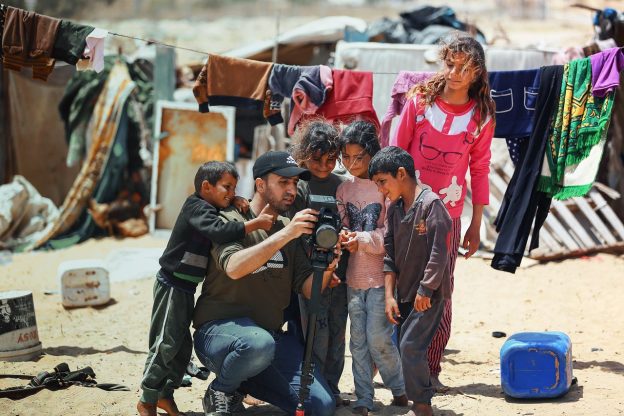What makes Gaza different from the West Bank? Some people confuse the situation in Gaza with that in the West Bank. Some people also think that what happens in Gaza impacts on life in the West Bank. In fact, the two regions are separate and events in one do not necessarily impact events in the other.
Let’s start by saying that both situations are completely different. Gaza is not the same as the West Bank, and both situations differ enormously from each other in all aspects of daily life, economics, and freedom of movement.
What is the Gaza Strip?
Gaza is known as “Gaza Hashim” “غزة هاشم” because it refers to Hashim Bin Abed Manaf, the grandfather of the Prophet Mohammed. Gaza is the southern-most region of the Palestinian coast on the Mediterranean Sea. This strip of territory has been named after its largest city, Gaza city.
The Gaza Strip contains five cities: Gaza, North Gaza, Deer Al Balah, Khan Yunis, and Rafah. It is comprised of a total area of 365 square kilometers. Israel borders it from the north and west while Egypt borders it from the western south.
The Gaza Strip is part of the lands that the Palestinian Authority wishes to establish its state on, as well as the territory of the West Bank. Gaza has an approximate population of 1.85 million people, which means that Gaza is the most densely populated area on earth. From 1948 to 1967, Gaza was under the authority and administration of Egypt. This situation ended with the Six Day War in 1967, and Gaza has been under Israeli control since then. Since 2006, Gaza has been subject to Israeli blockades that prevent goods essential for daily life and survival from entering Gaza.
Palestinian Refugees in Gaza
The Gaza Strip is home to a population of approximately 2.3 million people, which includes some 1.8 million Palestine refugees. Undeniably, for at least the last decade and a half, the socioeconomic situation in Gaza has been in steady decline due to a lack of resources and attacks from the Israeli occupation.
The UNRWA (United Nations Relief and Works Agency for Palestine Refugees in the Near East) provides vital services within the eight Palestine refugee camps in the Gaza Strip. However, the administration and policing of these camps are not within UNRWA’s purview; instead, this responsibility falls upon the host authorities. For those interested in making a positive impact, we highly recommend contacting UNRWA to inquire about internship and volunteer programs. Indeed, engaging with Palestinian children, women, and refugees in Gaza through such programs can contribute significantly to humanitarian efforts in the region.
Who Controls the Gaza Strip?
In 1993, Israel and the Palestinian Liberation Organization signed a peace agreement wherein the newly created Palestinian Authority was allowed to govern the Gaza Strip and the West Bank. In 2006, Hamas seized control of the Gaza Strip after winning the parliamentary elections. Since then Hamas has controlled the whole strip, which has led to political problems with the Palestinian Liberation Organization.
How to Enter Gaza?
There are no options currently other than the Rafah Border Crossing, controlled by Egypt, to enter or exit the Gaza Strip. Due to the ongoing war and siege on Gaza, entry to and exit from the Gaza Strip is currently extremely limited.
Are there any Jewish Settlements in Gaza like the Ones in the West Bank?
After taking control of the Gaza Strip in 1967, Israel built about 25 settlements there, most of them on the south of the Gaza coast in the northern sector. The estimated number of settlers was about 7781. On September 12, 2005, Israel decided unilaterally to evacuate the settlements and ended its presence in the Gaza Strip, declaring an end of its military rule there.
Is There Still Any Israeli Role in Gaza?
Yes, the Israeli military still observes and monitors activities in the strip. They conduct military operations inside the strip from time to time.
In addition, Israel continues to fully control all the Gaza crossings with Israel. The crossing between Gaza and Egypt is also subject to joint control between Israel and Egypt. Since 2005, Gaza has been subject to an Israeli blockade which prevents essential goods required for daily life and survival from entering Gaza. Therefore, even though Israel has technically withdrawn from the Gaza Strip they remain in control by supplying Gaza residents with drinking water, fuel, and electricity. In effect, Israel maintains strict control over the Gaza strip even after its 2005 withdrawal.
Are Gaza and the West Bank Connected? Am I Allowed to Enter Gaza Strip?
Gaza and the West Bank are not connected to each other at all. However, there is a crossing through which travel between the regions is possible. This crossing point is called “Erez” and it is fully controlled by the Israeli authorities. Entering Gaza is difficult from both sides, either through Israel or Egypt.
The Israeli authorities require that those who want to enter gain special permission based on reasonable grounds. The embassies of some countries, such as the United States and Canada, advise their citizens not to enter Gaza. However, with permission, it is easy, though time consuming, to enter Gaza.
How To Get Further Information
For more information, please visit our website: https://excellencenter.org/
Engage in Palestine: https://ecpalestine.org/
Study in Palestine: https://studyinpalestine.org/
Whatsapp:+972 599 479 880
Instagram: https://www.instagram.com/excellence.center
Facebook page: https://www.facebook.com/ExcellenceCenter
Facebook account: https://www.facebook.com/RafatECHebron
Watch us on Youtube: https://www.youtube.com/channel/UCsQSLdFZWZcBm6Uj0XMYuKg
Visit and Explore Palestine: https://www.facebook.com/ExplorePalestine
Tags: Gaza Geography Insights, Gaza Strip, Gaza Strip Highlights, Gaza's Distinctive Identity, Gaza-West Bank Comparison, Palestinian Territories, Volunteer work in Gaza



